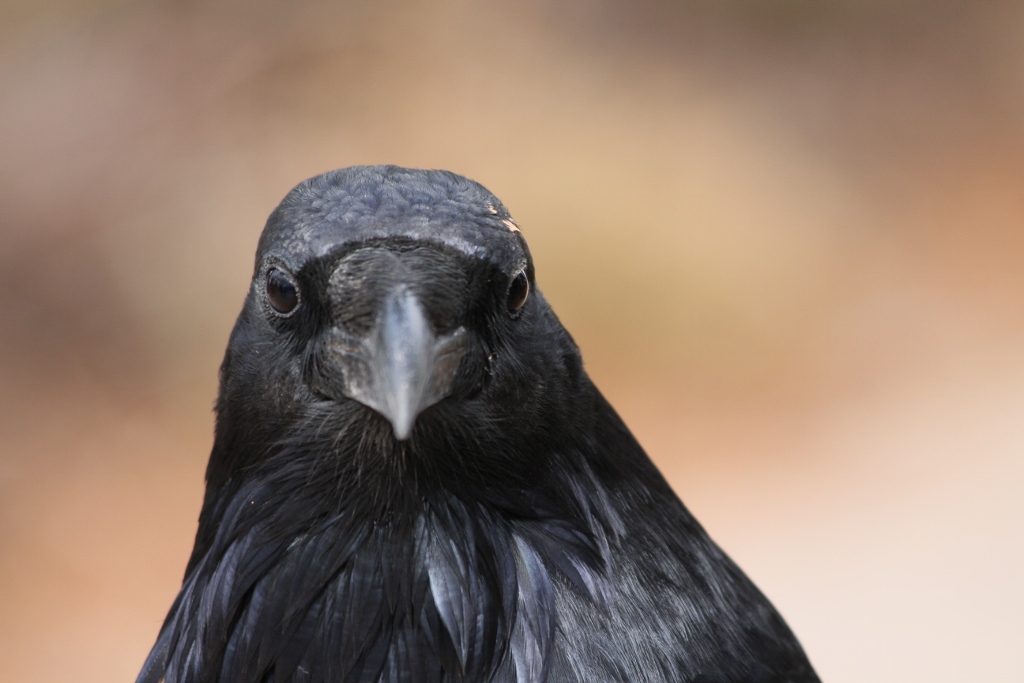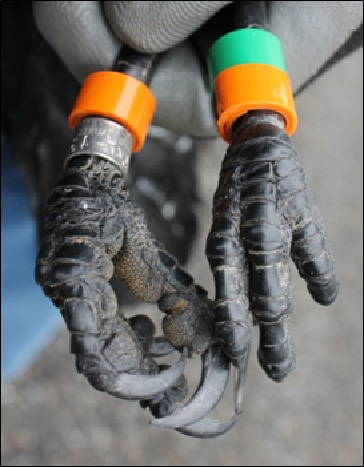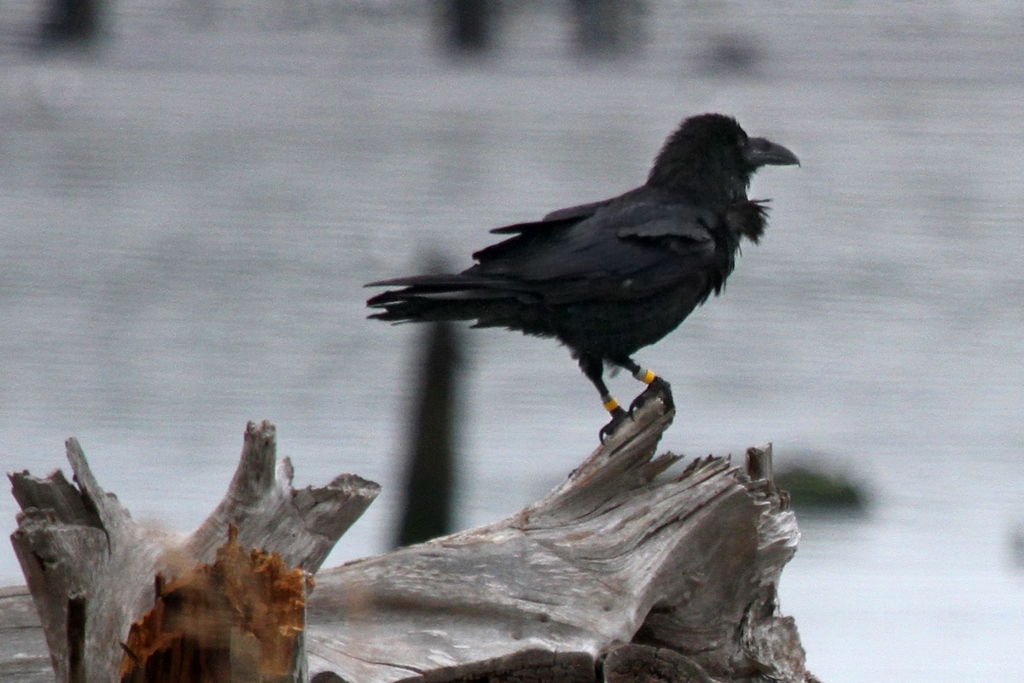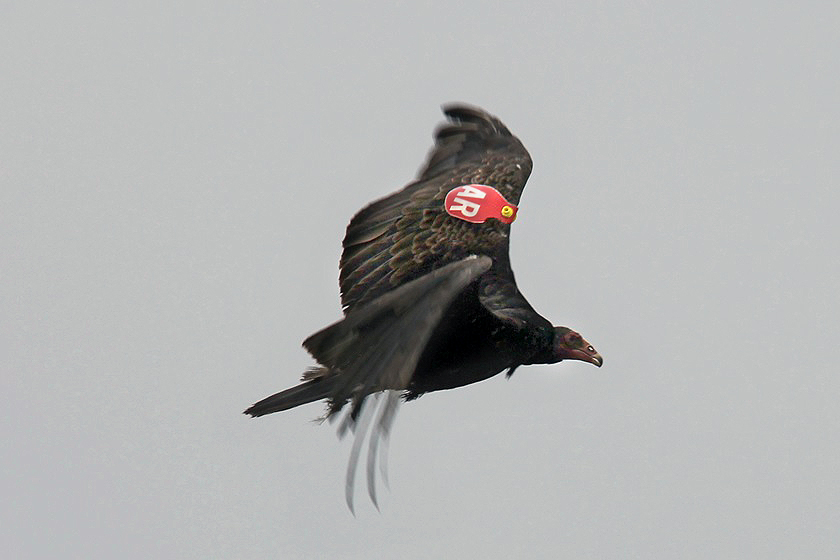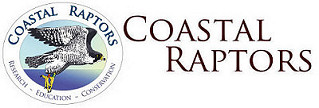To identify individual birds that we capture for our research after they are released, we mark them for identification with leg bands or wing tags. The vulture above with wing tag AR was captured and tagged at our Grayland study beach on June 15, 2015. He’s been sighted eight times since then, all during summer or early fall on the southern coast of British Columbia, 2015-2024.
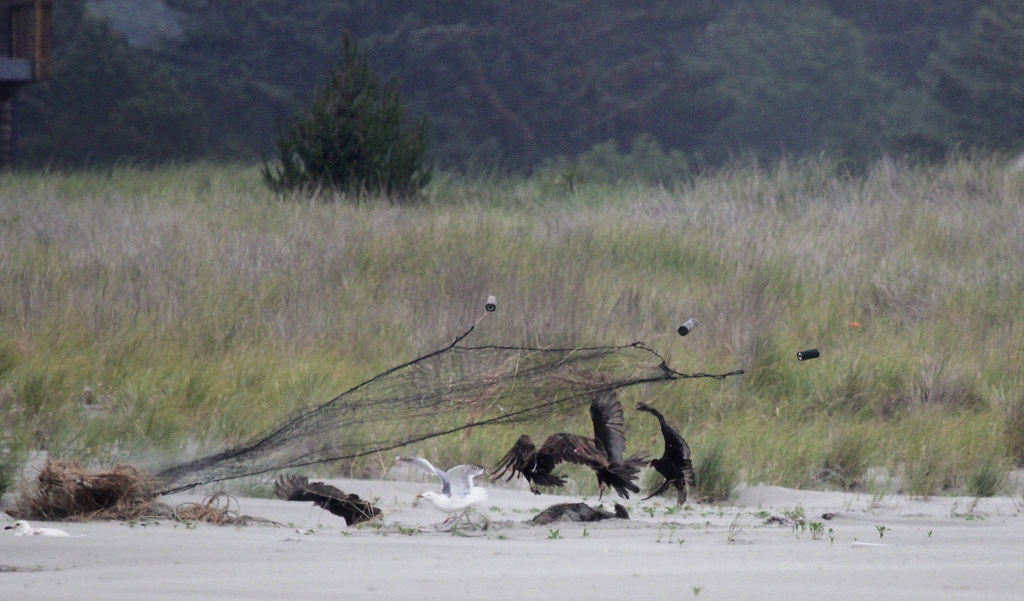
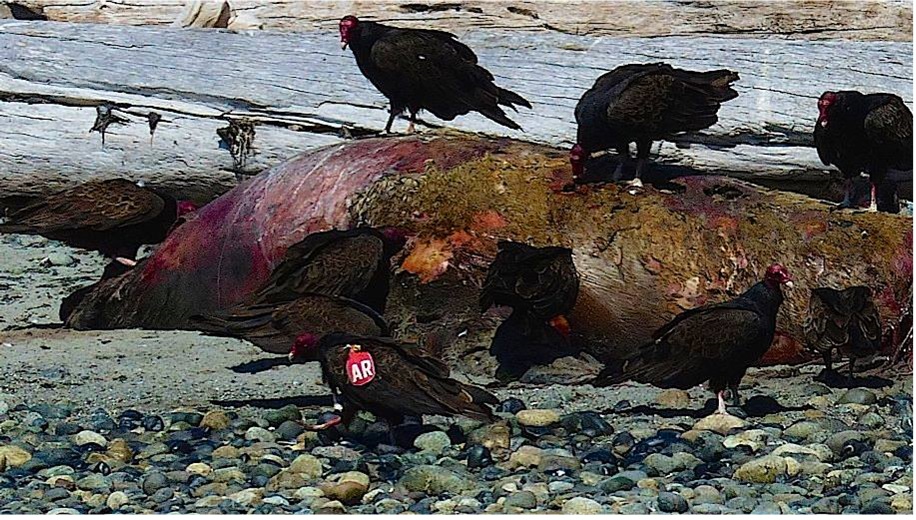
Below are descriptions and photos of the markers that we use. If you see a marked Peregrine Falcon, Gyrfalcon, Bald Eagle, Turkey Vulture or Common Raven, please report it (see our Contact Us page).
Peregrine Falcons – Banded 1995 to present
We fit Peregrine Falcons we capture with green or black-over-blue visual identification (VID) bands and red or blue USGS bands. We anodize USGS bands to distinguish between Peregrine Falcons we band at Long Beach (red) from those we band at Ocean Shores or Grayland (blue).
Peregrine Falcon VID bands have a letter-letter, letter-number or number-number code. We follow the protocol for peregrines banded in North America established by the USGS Bird Banding Lab. Accordingly, we apply green VID bands to peregrines of the Peale’s subspecies (Falco peregrinus pealei) and black-over-blue to the Continental subspecies (F.p. anatum), the tundra subspecies (F.p. tundrius) and to individuals where a subspecies designation was unclear.
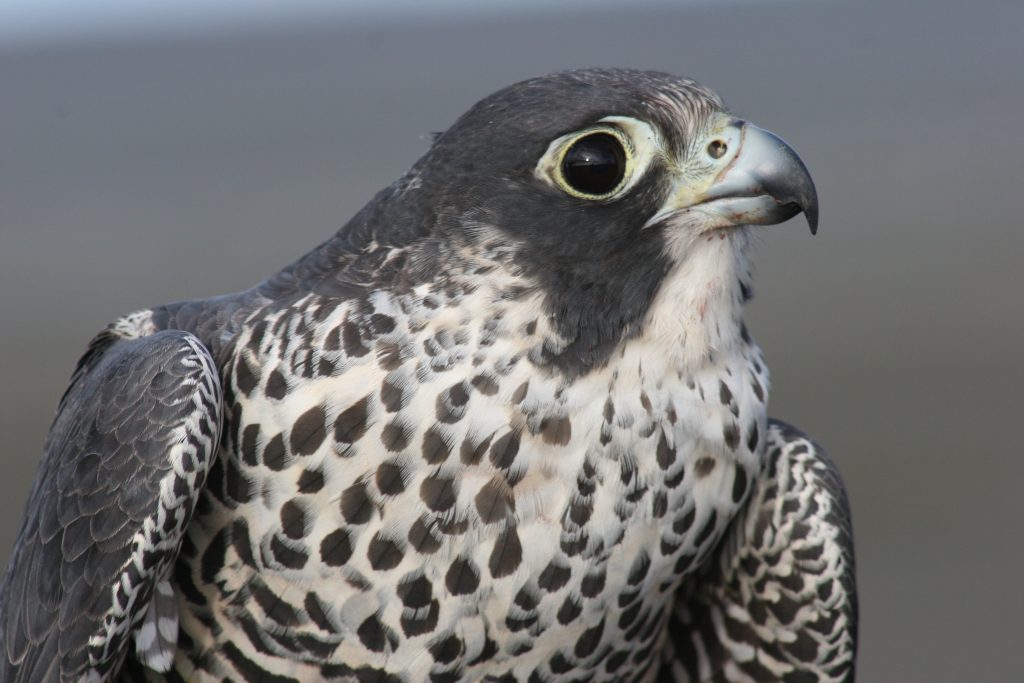
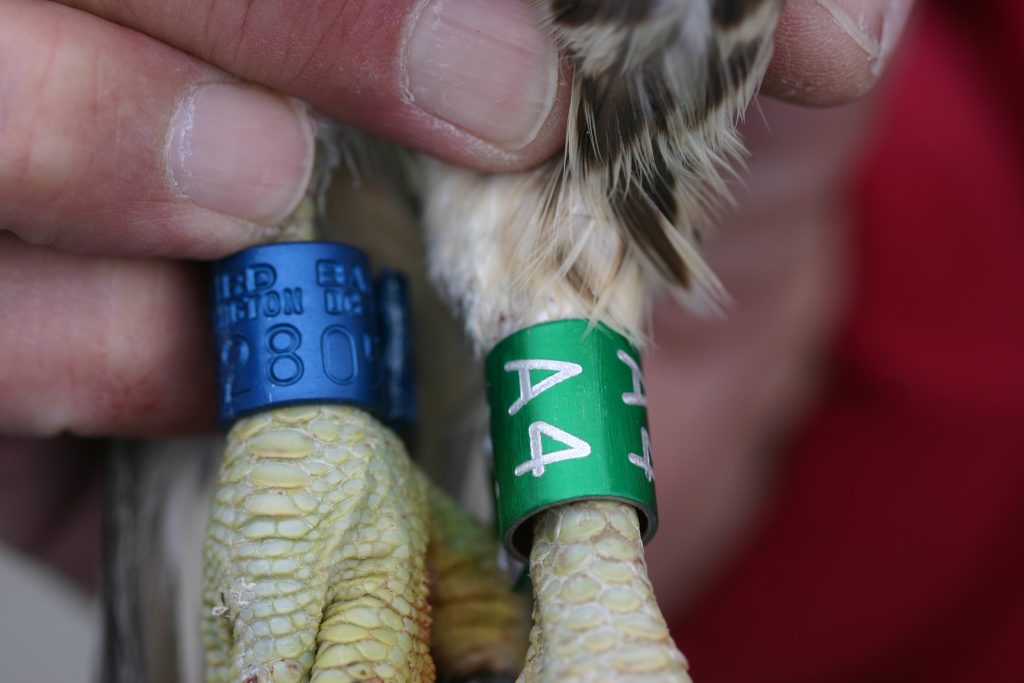

Gyrfalcons – Banded 1996 to present
We fit Gyrfalcons we capture with red or blue VID bands with a one-number code on one leg and a silver USGS band on the other.
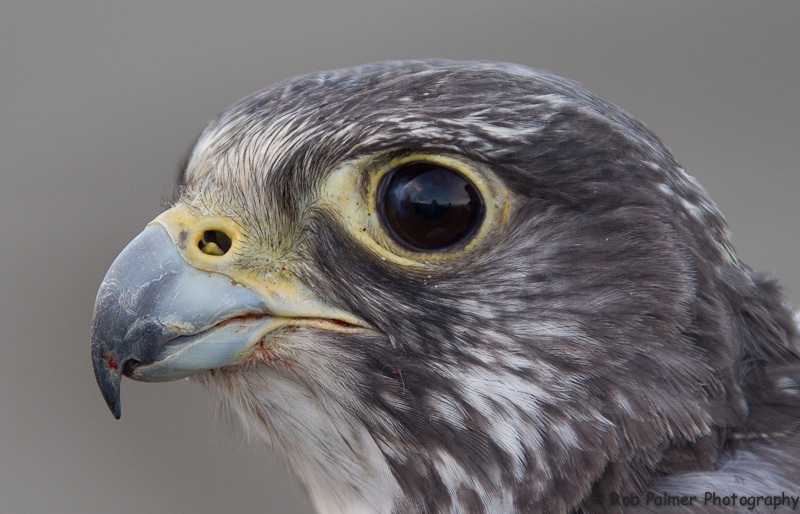

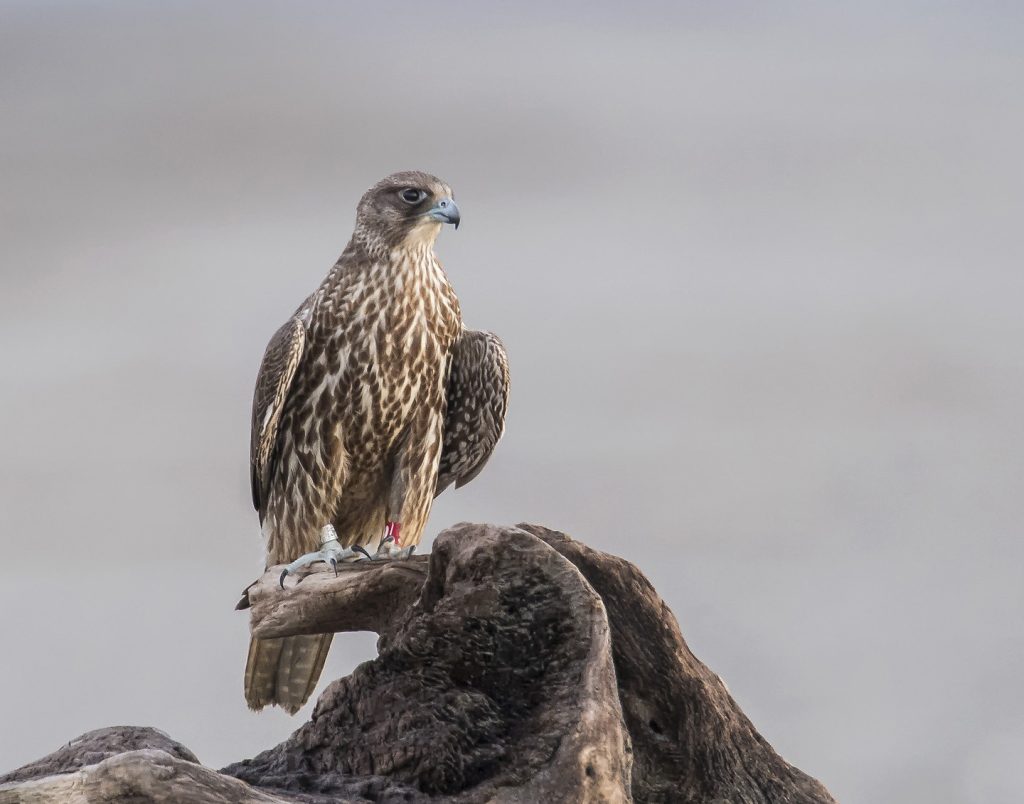
Bald Eagles – Banded 2005 to present
We fit Bald Eagles we capture with green visual identification (VID) bands and silver USGS bands. These VID bands have a letter-letter or letter-number code.
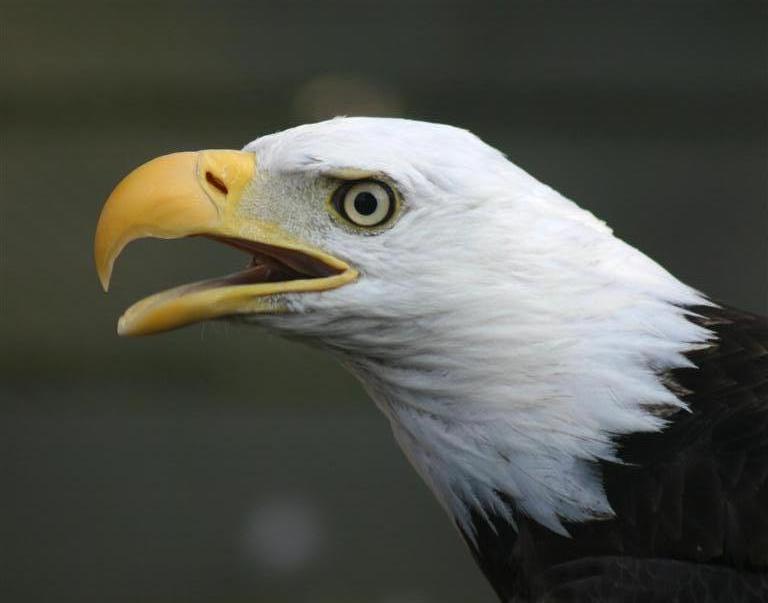
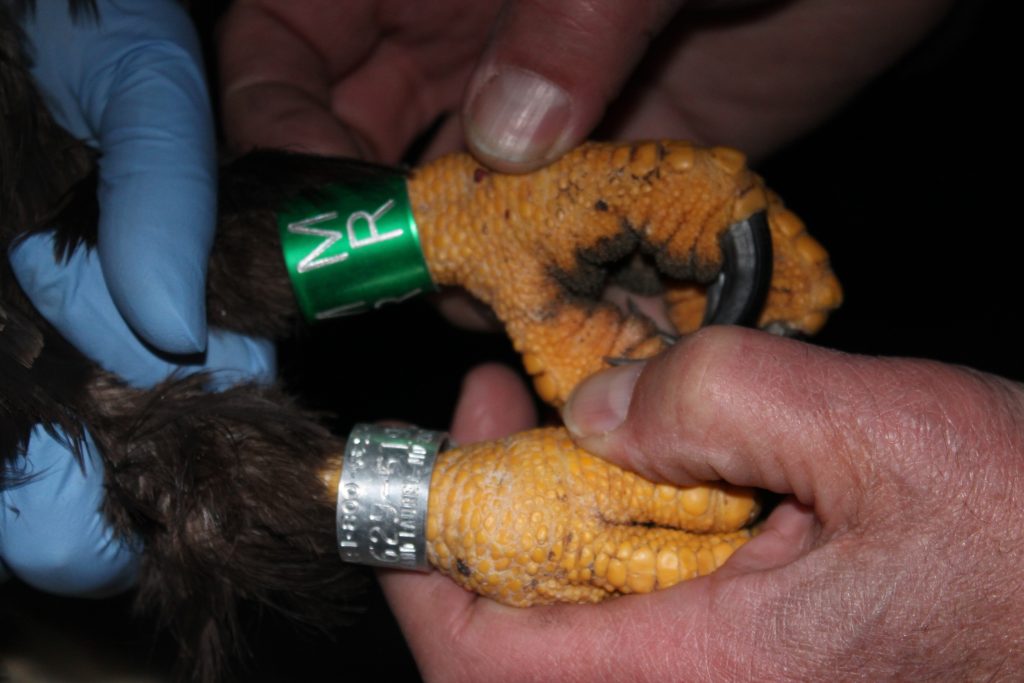
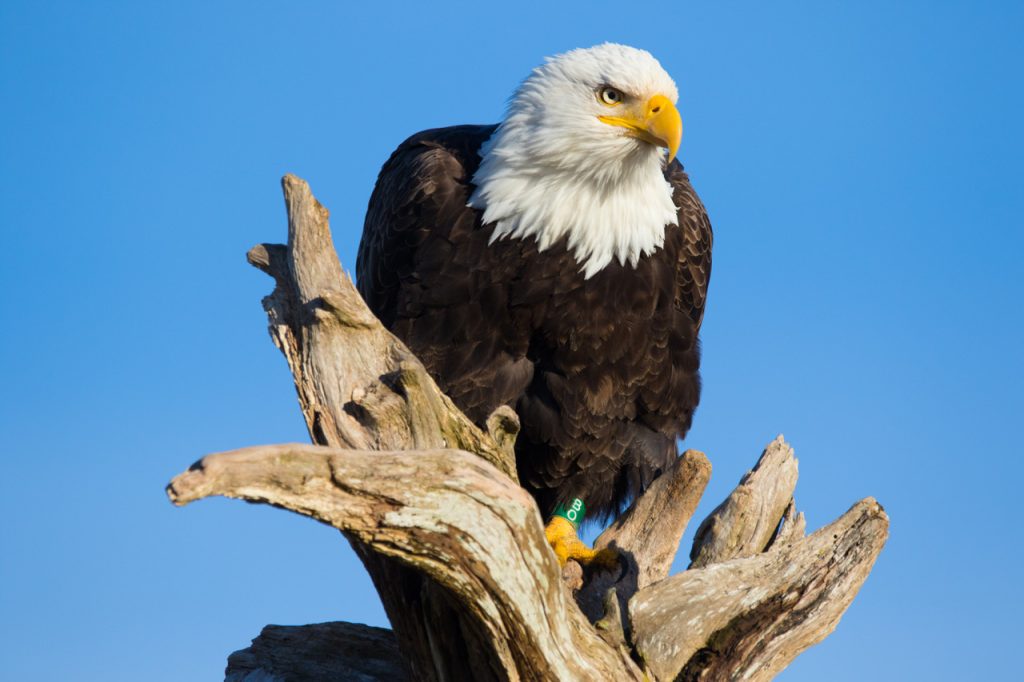
Turkey Vultures – Wing tagged 2012 to 2023
We fit Turkey Vultures we capture with red wing tags bearing letter-letter codes. Why wing tags and not bands? Turkey Vultures defecate on their legs to cool down in hot weather and to kill bacteria (their poop is acidic). If Turkey Vultures were banded, the poop would collect between band and leg, leading to abrasion wounds and infection. Consequently, federal permitting authorities in the US (the Bird Banding Lab) and Canada (the Bird Banding Office) restrict vulture marking to wing tags.
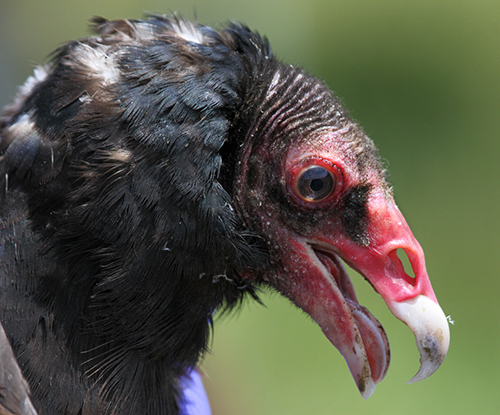

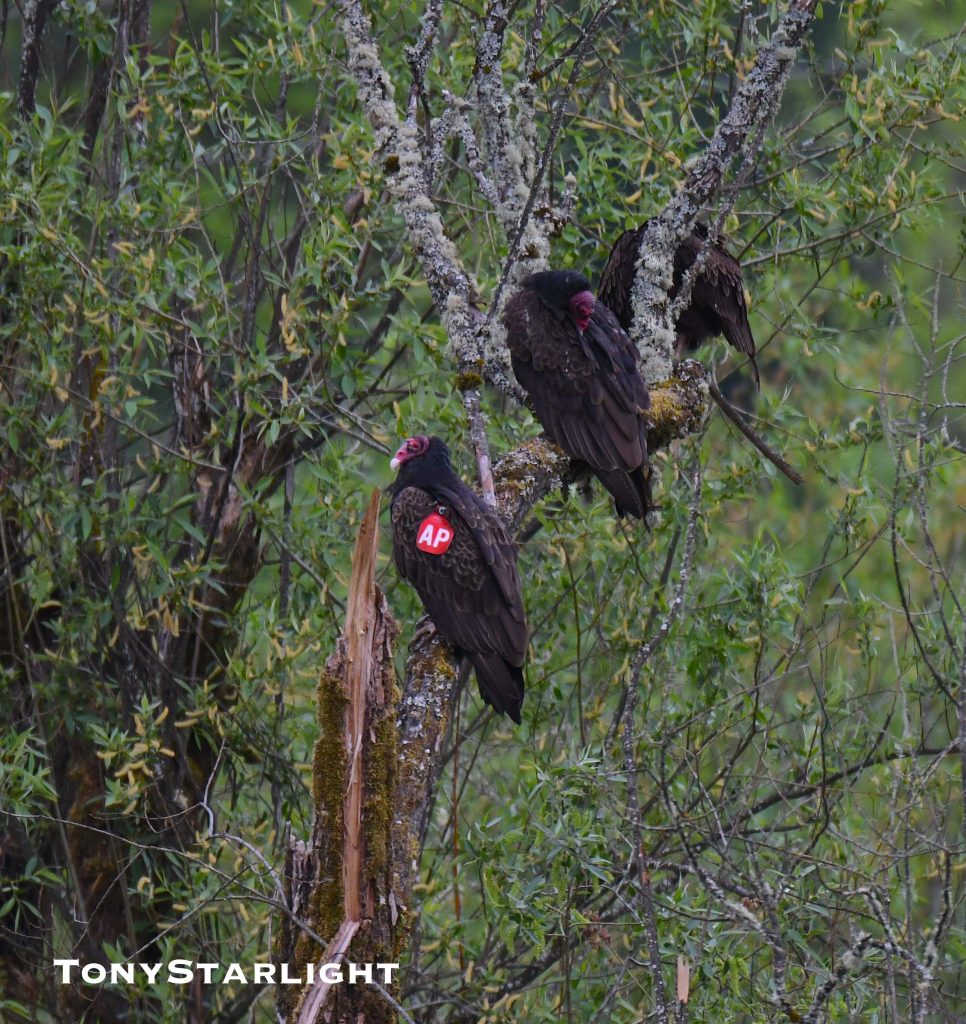
Common Ravens – Banded 2012 to 2016
We fitted Common Ravens we captured with unique combinations of three colors of stackable bands, choosing from orange, green, yellow or gray, and silver USGS bands. Two color bands were applied to one leg while the other received a color band and a silver USGS band.
